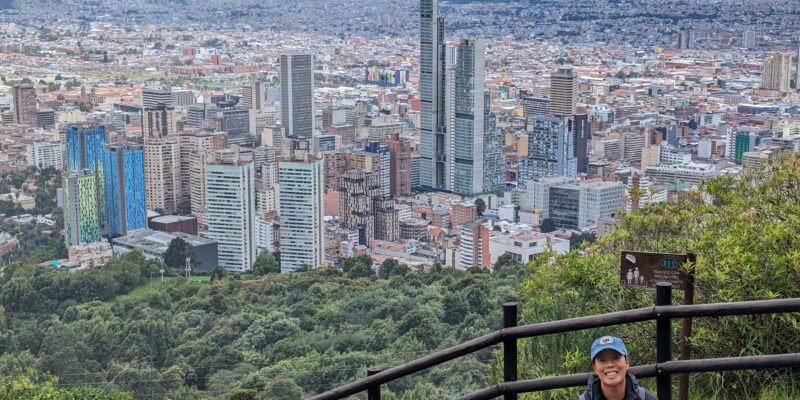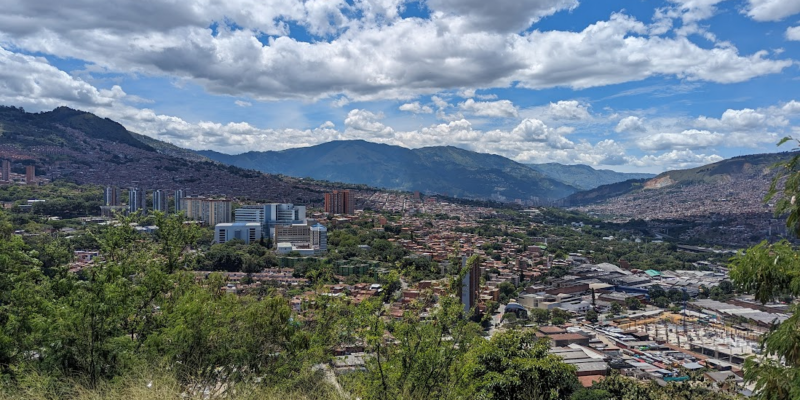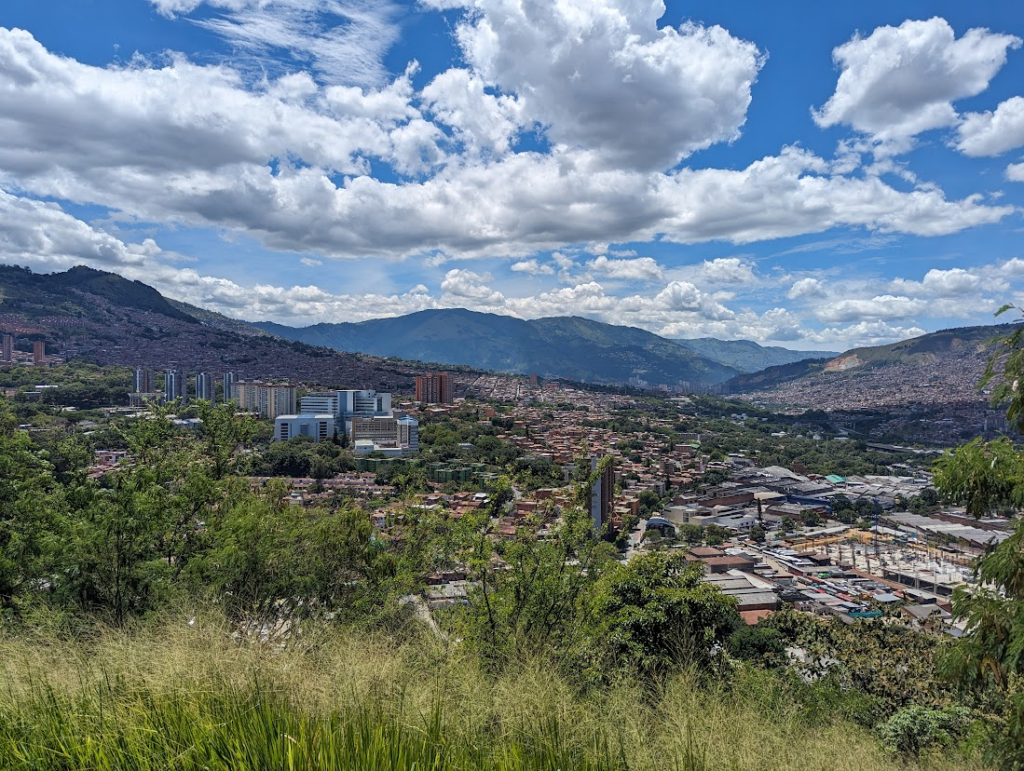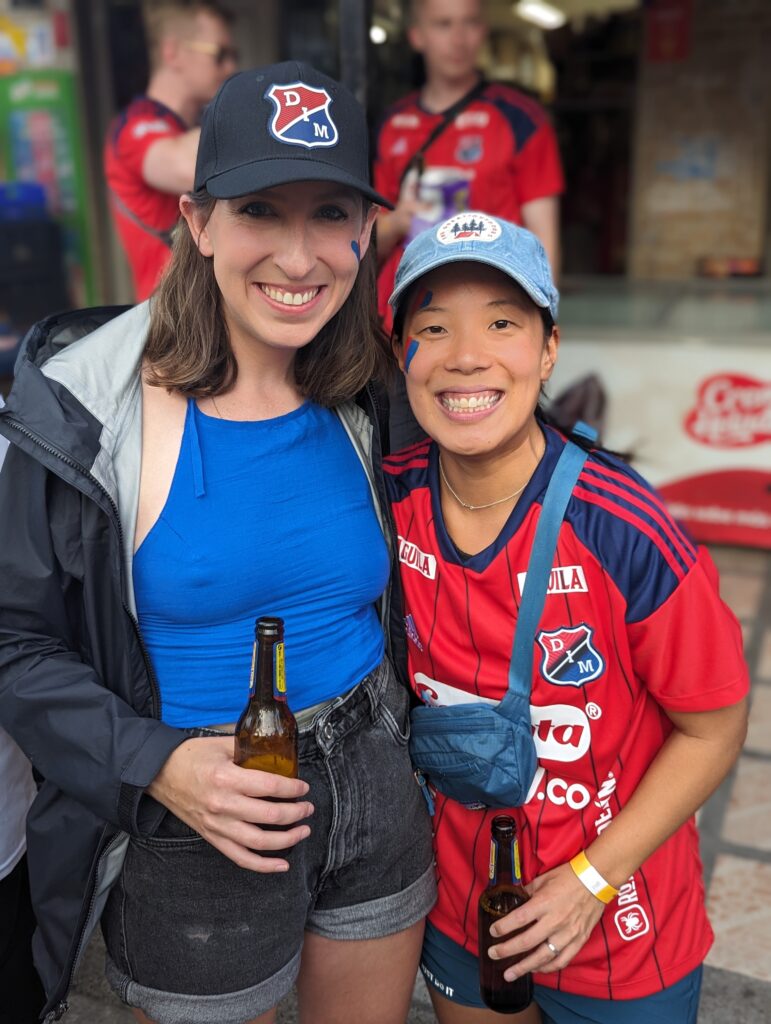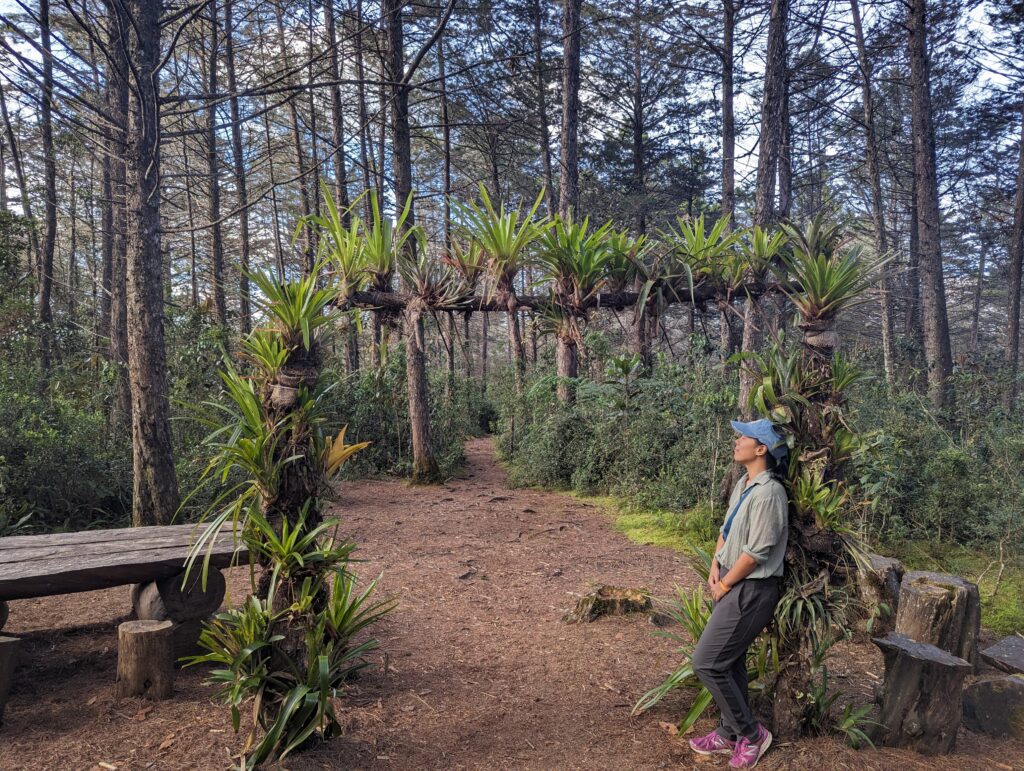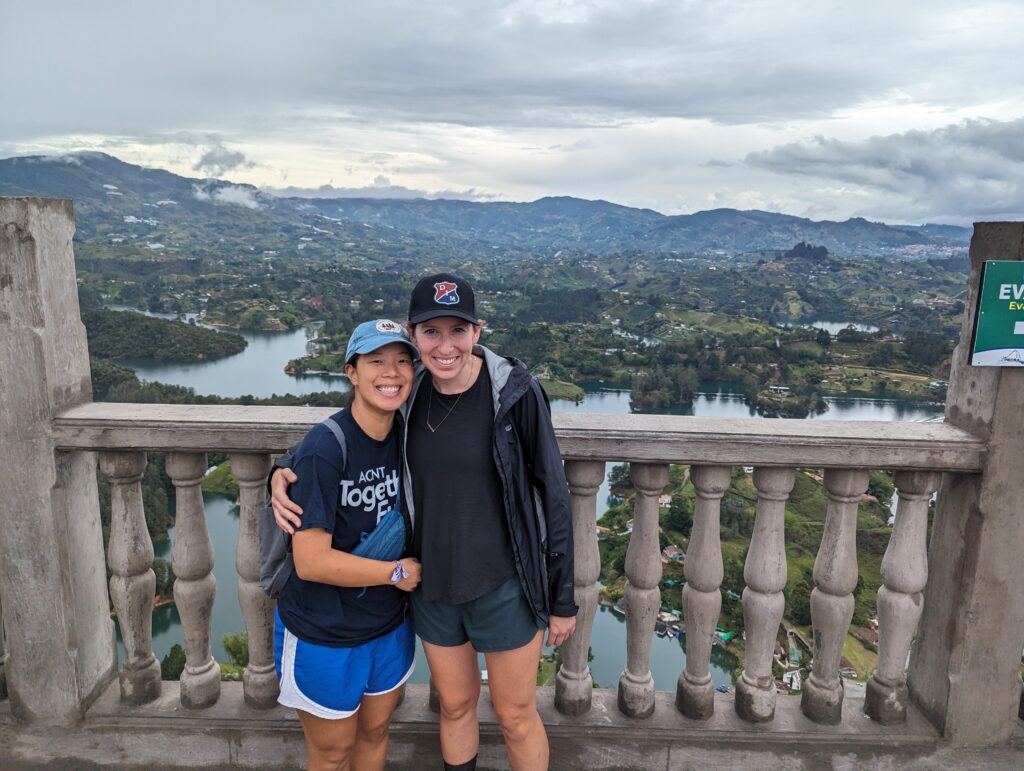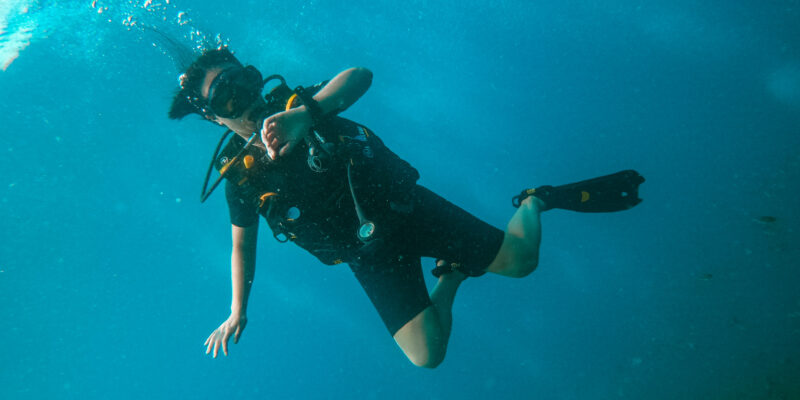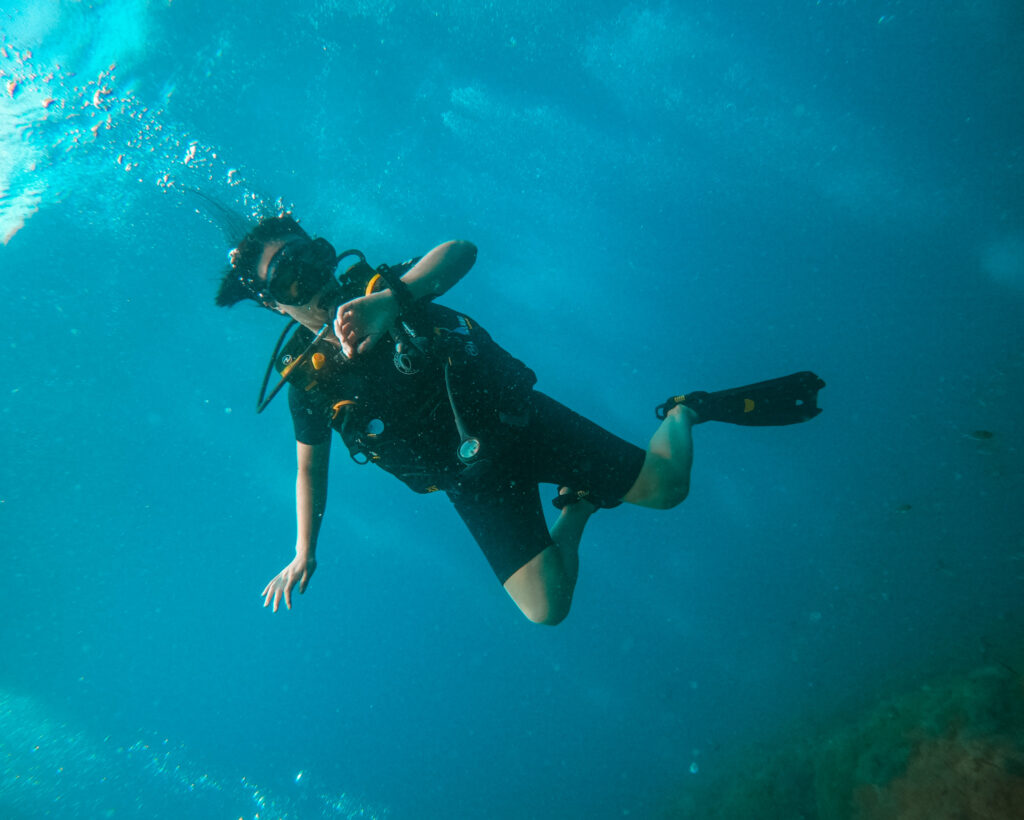We started the Latin American leg of our seven and a half month mini retirement back in July and we really fell in love with the country quickly to our surprise. Colombia as a country has a misunderstood history that’s been influenced negatively by its dark violent past, and by pop culture such as Netflix shows like Narcos. When we first came to Colombia all I knew about Colombia was coffee, Pablo Escobar, and that it had a history as one of the largest suppliers of cocaine in the world.
When we told our friends and family that we would be visiting for the first time, they were all surprised. They thought we were crazy since “isn’t it dangerous?” but we learned that Colombia is a country of transformation and a place where it’s people are looking to reinvent and rebuild from a dark past.
5 Things You Didn’t Know about Colombia
- Biodiversity Hotspot: Colombia is one of the world’s most biodiverse countries, housing approximately 10% of the planet’s known species. What’s less known is that Colombia ranks first in bird and orchid species diversity globally. With over 1,900 bird species, it surpasses even the vast Amazon rainforest in terms of avian variety.
- Coffee Axis Mysteries: Beyond being renowned for its coffee, the Coffee Cultural Landscape of Colombia hides a peculiar phenomenon. In the town of Armenia, there’s a spot known as El Eje Cafetero (The Coffee Axis), where cars seemingly defy gravity on a downhill slope. This optical illusion, popularly known as the “Magnetic Hill,” is a must-see and remains a mystery that locals and visitors enjoy.
- Colombia’s Seven Colors River: Located in the Serranía de la Macarena, the Caño Cristales River is often referred to as the “Liquid Rainbow” due to its vibrant array of colors, including red, blue, green, yellow, and black. This mesmerizing display is caused by a unique combination of aquatic plants, minerals, and the way sunlight interacts with the riverbed, creating a breathtaking spectacle. Access to Caño Cristales is limited, adding to its mystique.
- Cocora Valley’s Wax Palms: While many are aware of the lush landscapes of Cocora Valley, home to Colombia’s national tree, the wax palm, not everyone knows that these towering palms can reach heights of up to 60 meters (197 feet). The wax palm is the tallest palm species in the world and has a unique, slender appearance that adds to the valley’s surreal charm.
- Colombian Desert Oasis: In the northern department of La Guajira lies the surreal Guajira Peninsula, home to the seemingly out-of-place Manaure Salt Flats. What’s unconventional is the juxtaposition of arid, barren landscapes with the presence of a vibrant pink and red lagoon. These colorful lagoons are the result of microorganisms and salt-loving algae, creating an otherworldly scene against the backdrop of the desert.
Bogota, Colombia is only a 6 hour direct flight from NYC and with Bogota being one of several travel hubs in South America, it’s in a great location for a weekend trip or a connection to another country in the greater South American continent. We spent a week in Bogota (only planned on spending a few days) but we fell in love with the gastronomic culture, history, the greenspace juxtaposed with the vibrant nightlife and people we met.
A few things to keep in mind:
- Drinking water: Drinking water is not drinkable out of the tap water so make sure to boil water or buy bottled water when you can!
- Currency: Cash versus card. You can easily use the credit card at all major hotels, restaurants, and businesses but it’s always good to carry cash if you are buying smaller things off the street, street food etc. The Colombian Peso is about 3990 Colombian Pesos = $1.00 USD.
- Weather: July was a great time to visit since Bogota is actually much cooler than other parts of the country since it is at higher elevation in the valley of the Andes.
- Safety: Although the city is safe, we were recommended by locals to take Ubers at night or once it got dark. It was really cheap (less than <$5 to get from one part of the city to another ~30-40 min) and you did not have to worry about walking around at dark in the night. Exercise common sense where you do not walk alone at night, stay in touristic and crowded areas at night. Overall we felt safe in Bogota but we definitely explored in a group and once it got dark just took Ubers everywhere.
How To Get Around
When we arrived at the airport in Bogota, I had to Google the situation in Colombia. Uber is technically illegal in Colombia. This means that Uber does operate normally but oftentimes Uber drivers will ask you to sit in the front of the car to make it seem like you are the passenger. We did not have any issues catching Ubers once we were in Bogota but from the airport, you should take an official taxi where you can negotiate the price of the cab. Cut everything in half and know that you will likely be charged a Gringo rate unless you know Spanish.
We also downloaded Cabify, which is a great app that allows you to negotiate the fare prior to the driver accepting the ride. This definitely helps with reducing the issues with language barriers but also allows you
WHERE TO STAY
There are a few different areas that are popular to stay in Bogota. There is the La Candelaria, or Old Town which is close to the historical downtown area and Chapinero which is closer to all the nightlife/clubs/bars. We stayed at the Viajero Bogota in La Candelaria area and thought it was a great location since it was walking distance to all the touristic areas, it felt safe (although would not recommend walking around by yourself at night) and had plenty to do without having to take Ubers or public transportation. We also stayed at the W-Hotel which is in the northern part of the city in a neighborhood called Usaquen which felt much more upscale, green, and quite affluent. We would HIGHLY recommend staying at the W-Hotel even if for a few nights since it was one of the best hotel experiences we had in the last eight months! A full deep dive on our review of the W-Hotel here.
We loved our time in Bogota and it’s such a beautiful and underrated destination in the South America that is transforming and re-emerging out of a dark historical past! Keep on reading to see our favorite things to do on your trip:
BEST THINGS TO DO
- The Free Walking Tour – Free walking tours are a great way to get acquainted with a city quickly and feel more comfortable walking around and exploring on your own in subsequent days. We always did a walking tour when we could to ground ourselves in the history, culture, and context of the country and typically looked for locally run walking tours versus big corporations like GuruWalks etc. The Free Walking Tour in Bogota through a company called Beyond Colombia is a captivating journey through the heart of the city, offering an immersive experience into its rich history and culture. Led by knowledgeable local guides, this tour provides a dynamic exploration of Bogota’s diverse neighborhoods, vibrant street art, and historical landmarks.
- Noteworthy Activities:
- Explore La Candelaria, Bogota’s historic district.
- Visit the Gabriel Garcia Marquez Cultural Center.
- Witness the vibrant street art in the district
- Prices:
- While the tour is labeled as “free,” it operates on a tips-only basis. It’s customary to tip the guide based on your satisfaction with the tour.
- Noteworthy Activities:
- Website: Free Walking Tour Bogota; Check out their other tours as well
- Gold Museum – The Gold Museum, or Museo del Oro, is a mesmerizing display of pre-Columbian gold artifacts, offering a glimpse into Colombia’s ancient civilizations. With an extensive collection of gold and other metalwork, the museum is a treasure trove for history enthusiasts.
- Prices: Admission is
- Website: Gold Museum
- Plaza de Bolivar: Plaza de Bolivar is the central square of Bogota, surrounded by significant government buildings and historical landmarks. This bustling plaza serves as a hub for political and cultural activities, making it a must-visit for those interested in the city’s civic life.
- Noteworthy Activities:
- Visit the Primatial Cathedral of Bogota.
- Explore the Capitolio Nacional and the Palace of Justice.
- Witness street performances and local events.
- Prices: Entry to the plaza is free.
- Noteworthy Activities:
- Museo Nacional de Colombia: The Museo Nacional de Colombia is the country’s oldest and largest museum, showcasing Colombia’s cultural and historical evolution. The museum’s extensive collection spans art, artifacts, and exhibitions, providing a comprehensive view of the nation’s heritage.
- Prices: Check the official website for current admission fees. Discounts may be available for students and seniors.
- Website: Museo Nacional de Colombia
- Botero Museum: The Botero Museum showcases an impressive collection of artworks donated by the renowned Colombian artist Fernando Botero. With a focus on Botero’s signature style—characterized by voluptuous figures—the museum is a cultural gem in the heart of Bogota and Botero donated the museum and admission is free to provide accessibility to art to all Colombians and the world.
- Via a Monserrate or Cerro de Monseratte: The journey to Monserrate offers breathtaking views of Bogota from the city’s iconic mountain. Whether you hike, take a cable car, or a funicular, the ascent to Monserrate is a must for panoramic views and a tranquil escape from the city below. We recommend hiking the scenic trails over taking the cable car/funicular but the hike is definitely more strenuous than we thought! But when you get to the top, make sure to visit the Santuario del Señor Caído church and enjoy local cuisine at one of the mountaintop restaurants.
- Usaquen Flea Market: Usaquen Flea Market is a charming weekend market in the Usaquen neighborhood, offering a delightful mix of artisan crafts, antiques, and local delicacies. The market’s bohemian atmosphere makes it an excellent place for leisurely strolls and unique finds. You can wander and shop for handmade crafts and souvenirs and indulge in local street food and traditional Colombian snacks.
- Sunday Streets Closing: Sunday Streets Closing is a weekly event where certain streets in Bogota are closed to vehicular traffic, transforming them into vibrant pedestrian zones. This initiative encourages outdoor activities, cultural performances, and community engagement. The
Note: Prices, websites, and addresses are subject to change, and it’s advisable to check the official sources for the most up-to-date information.
WHAT TO EAT
- La Puerta Falsa Restaurant – La Puerta Falsa Restaurant is a historic gem nestled in La Candelaria, Bogota’s oldest neighborhood. Known for its traditional Colombian fare and charming atmosphere, this restaurant dates back to 1816. The narrow entrance leads to a cozy interior adorned with vintage decor. Signature dishes include ajiaco, a hearty Colombian soup featuring chicken, potatoes, corn, and capers and tamal bogotano, which is a corn dough stuffed with a mix of meats and vegetables, wrapped in banana leaves. We also tried the hot chocolate paired with almojábanas (cheese bread) for a delightful Colombian breakfast experience.
- Price: Reasonably priced, with main dishes ranging from COP 20,000 to COP 40,000.
- Prudencia – Prudencia is a culinary haven located in the heart of Bogota, celebrated for its commitment to local, organic ingredients. This intimate restaurant offers a seasonal menu that highlights the flavors and diversity of Colombian cuisine, presented with an artistic touch. Prudencia is truly a unique dining experience with a 7 course tasting menu with drinks for $80 per person or $56 tasting menu / no drinks included. Owned by a Colombian couple who lived in the US, they brought an international perspective to un-fussy, locally sourced ingredients. The menu changes depending on what is in season and typically there are seating either for lunch or dinner. You have to text them on their website via WhatsApp to make a reservation! Past signature dishes include Seco de Cordero or Lamb stewed with Andean herbs and potatoes and Trucha Ahumada which is a smoked trout with seasonal vegetables and potato puree.
- Price: Moderate, with main dishes ranging from COP 30,000 to COP 60,000.
- Abasto – Abasto is a contemporary eatery that combines a market and restaurant concept, offering guests a unique dining experience. Located in the trendy Usaquen neighborhood, Abasto emphasizes fresh, seasonal ingredients and a vibrant ambiance.
- Price: Moderate, with main dishes ranging from COP 30,000 to COP 60,000.
- Andres Carne de Res – Andres Carne de Res is not just a restaurant; it’s an institution in Colombian dining and nightlife. Located in Chia, a short drive from Bogota, this sprawling establishment offers a carnival-like atmosphere, with eclectic decor, live music, and a menu that caters to carnivores and party-goers alike. There are two locations but go to the location that is 1+ outside the city. You won’t regret it since the dancing and the people watching is spot on and the energy is much better than the one that’s closer to the airport (which isn’t the original and caters to more business types). Signature dishes include Bistec a Caballo which is grilled steak topped with a fried egg and served with plantains and bandeja paisa, which is a hearty platter featuring rice, beans, ground meat, plantains, and more.
- Price: Varies, with a wide range of options from COP 40,000 to COP 100,000 or more per person.
- Paloquemao Fruit Market – Explore the market early in the morning for the freshest produce and a glimpse into local daily life. Many vendors offer small snacks and juices to try on the spot. While not a traditional restaurant, the Paloquemao Fruit Market is a must-visit for food enthusiasts seeking a taste of Colombia’s diverse produce. This bustling market in Bogota is a sensory delight, offering fresh fruits, vegetables, and local delicacies.
We had the best time in Bogota and it was a great way to start our mini-retirement trip! If you want to see more of our trip, make sure you check out our YouTube channel. We’ll continue to cover our recommendations for Medellin, Santa Marta, and other parts of Colombia later in our blog.

